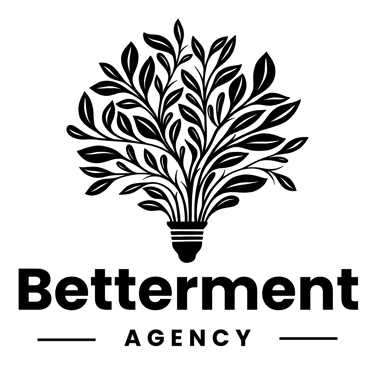The Biggest Challenges to Businesses in 2025 and How Marketing Can Help. Part 2 – Taxation and Operating Costs
Businesses face some difficult challenges in 2025. In this blog we explore how marketing strategies can help mitigate the impact of rising taxation and operating costs.
BUSINESS CHALLENGESMARKETING STRATEGY


For businesses in the South East, 2025 has brought a challenging mix of increased taxation and rising operating costs. From higher National Insurance Contributions to soaring energy prices, these pressures are squeezing profit margins across industries. While cost-cutting and operational efficiency are essential, a strong, strategic approach to marketing can also play a pivotal role in navigating these hurdles. Marketing should always be considered as an investment in your business and not a cost.
In this article, we explore how businesses can use marketing strategies to mitigate the impact of these financial challenges and even find opportunities for growth in the process.
The Impact of Taxation and Operating Costs on Businesses in 2025
The 2024 Autumn Budget has introduced higher taxes and fiscal measures aimed at addressing economic pressures while funding public services. Key changes include:
National Insurance Contributions (NICs): Chancellor Rachel Reeves announced a significant change to employers' National Insurance (NI) contributions. Starting from April 2025, the rate of employers' NI contributions will increase from 13.8% to 15%. Additionally, the threshold at which employers begin paying NI on an employee's salary will be reduced from £9,100 to £5,000 per year.
This change aims to raise approximately £25 billion per year by 2029/30 to help balance the state's finances and fund public services. However, it has sparked concerns about potential impacts on pay rises, job vacancies, and inflation.
Corporation Tax Increases: The main rate of corporation tax has risen to 25% for businesses with profits over £250,000, impacting mid-sized and larger companies. This can affect cash flow and reduce ability to reinvest in the business.
Business Rates: A revaluation of properties has led to increased business rates for many companies, particularly those in high-demand areas such as city centres and retail hubs.
Energy Levies: New environmental levies have been introduced to incentivise greener practices, which adds to energy costs for industries reliant on high energy consumption.
In parallel, operating costs are climbing due to inflation, higher wages, and volatile energy prices. Together, these challenges are putting pressure on businesses to either absorb the costs or pass them on to customers—both of which carry risks.
Amid these financial constraints, a well-executed marketing strategy offers a way to maximise revenue, strengthen customer loyalty, and improve operational efficiency.
How Marketing Can Help Businesses Thrive Despite Rising Costs
1. Focus on Value, Not Just Price
When costs rise, businesses often have to increase prices. This can be a tough sell, but effective marketing can help customers see the value they’re getting for their money.
Emphasise Unique Selling Points (USPs): Highlight what makes your product or service better than competitors—whether that’s quality, sustainability, or innovation.
Educate Your Audience: Use content marketing to explain why your prices have changed. Transparency about rising costs (e.g., higher wages for staff or improved materials) can foster trust and understanding.
By framing price increases as part of a commitment to quality or sustainability, businesses can retain customer loyalty and even strengthen their brand.
2. Target High-Value Customers
Not all customers are equally sensitive to price changes. Marketing can help you identify and focus on the most profitable segments of your audience.
Use Data Analytics: Leverage customer data to find those who are less price-sensitive or more likely to purchase premium offerings.
Retention Campaigns: Invest in loyalty programs, exclusive discounts, or personalised offers to keep high-value customers engaged.
By tailoring your approach to the customers who matter most, you can increase revenue while reducing acquisition costs.
3. Leverage Digital Marketing for Cost Efficiency
Traditional advertising can be expensive, especially when budgets are tight. Digital marketing offers a cost-effective alternative with measurable results.
Social Media Advertising: Platforms like Facebook, Instagram, and LinkedIn allow highly targeted ad campaigns with flexible budgets.
SEO and Content Marketing: Optimising your website for search engines and producing valuable content can drive organic traffic, reducing reliance on paid ads.
Email Marketing: Regular, personalised email campaigns are an affordable way to nurture customer relationships and drive repeat business.
These digital strategies can help businesses reach more customers without significantly increasing marketing spend.
4. Diversify Revenue Streams
Expanding your offerings or rethinking how you sell can help cushion the impact of rising costs.
Subscription Models: Offering products or services on a subscription basis creates predictable, recurring revenue.
Upselling and Cross-Selling: Use email campaigns or point-of-sale prompts to encourage customers to purchase complementary items or upgrades.
Bundles and Packages: Combining products or services into cost-effective bundles can increase the average transaction value while offering perceived savings to customers.
5. Strengthen Brand Loyalty
In a competitive market, loyal customers are more valuable than ever. A strong marketing strategy can help you keep them coming back.
Storytelling: Share your brand’s mission and values to create an emotional connection with customers. For example, if rising costs are linked to sustainability efforts, make that a key part of your messaging.
Community Engagement: Build goodwill by sponsoring local events, partnering with charities, or engaging with customers directly on social media.
Feedback Loops: Actively seek and act on customer feedback to improve your offerings and demonstrate that you’re listening.
By investing in relationships, you’re building a customer base that’s more likely to stick with you despite price changes.
6. Collaborate and Innovate
Marketing doesn’t have to be a solo effort. Strategic partnerships can amplify your reach and reduce costs.
Collaborations: Partner with complementary businesses to co-market products or services, sharing resources and audiences.
Affiliate Marketing: Encourage influencers or affiliates to promote your brand, paying them only for successful conversions.
Co-Branding: Jointly develop and market products with other businesses to split costs and expand your customer base.
Marketing as a Growth Engine
Rising taxation and operating costs are undoubtedly challenging, but they also present an opportunity for businesses to rethink their marketing strategies. By focusing on value, leveraging digital tools, and fostering customer loyalty, businesses can not only survive but thrive in the face of economic pressures.
If you’re looking to build resilience in 2025, your marketing strategy isn’t just a tool for selling—it’s a cornerstone for growth and sustainability. Adapt, innovate, and stay connected to your audience, and you’ll be better equipped to weather the challenges ahead.


